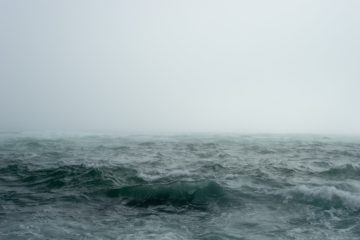Giulio Boccaletti in Orion:
 The fundamental struggle with water has never really abated since it first began on the shores of the Persian Gulf. The multiple transitions, from nomadism to sedentism, from hunting and foraging to domesticated agriculture, from small rural communities to a productive, specialized, urbanized society, were severe disruptions. But while individuals would have lived through them as gradual, incremental transformations, over the course of Homo sapiens’ existence, they amounted to shocking events. From the moment Homo sapiens, late in its history, decided to stay in one place, surrounded by a changing environment, it began to wrestle with water, an agent capable of destruction and life-giving gifts.
The fundamental struggle with water has never really abated since it first began on the shores of the Persian Gulf. The multiple transitions, from nomadism to sedentism, from hunting and foraging to domesticated agriculture, from small rural communities to a productive, specialized, urbanized society, were severe disruptions. But while individuals would have lived through them as gradual, incremental transformations, over the course of Homo sapiens’ existence, they amounted to shocking events. From the moment Homo sapiens, late in its history, decided to stay in one place, surrounded by a changing environment, it began to wrestle with water, an agent capable of destruction and life-giving gifts.
The reason the early story of water and society matters is that it has left deep cultural traces guiding and inspiring human adaptation ever since. For example, given the experience of early Chinese communities, it is not surprising that water myths are abundant in that culture, and have captured the role of the water landscape in Chinese identity. One Chinese myth tells of how the world formed from the body of a giant, whose blood and veins turned into water and rivers. In another, the Jade Emperor, Lord of Heaven, entrusted four great dragons to bring rain to the people. Their names were Long, Yellow, Pearl, and Black. After they disobeyed him, he entrapped them in mountains, so the dragons turned themselves into rivers, becoming the Yangtze, Yellow, Pearl, and Amur Rivers, the great historical sources of water for agriculture. These are the cultural traces of the great East Asian monsoon.
More here.
